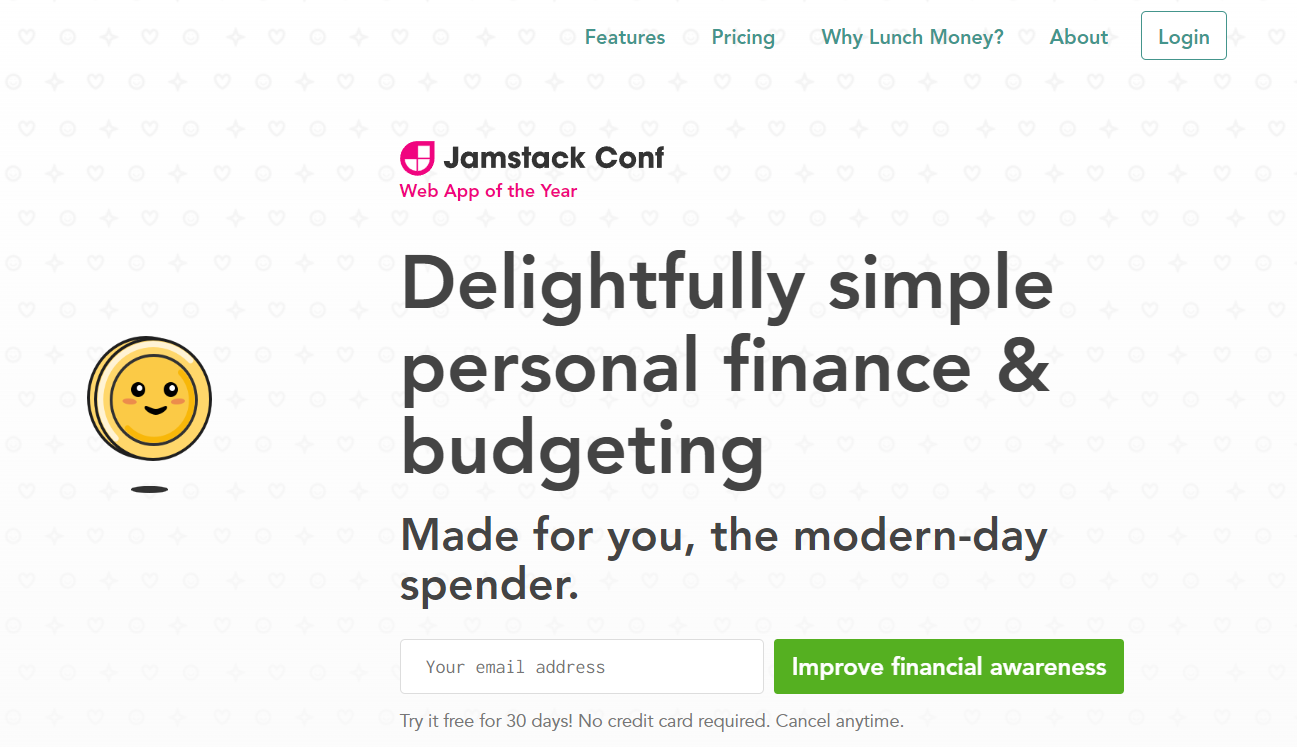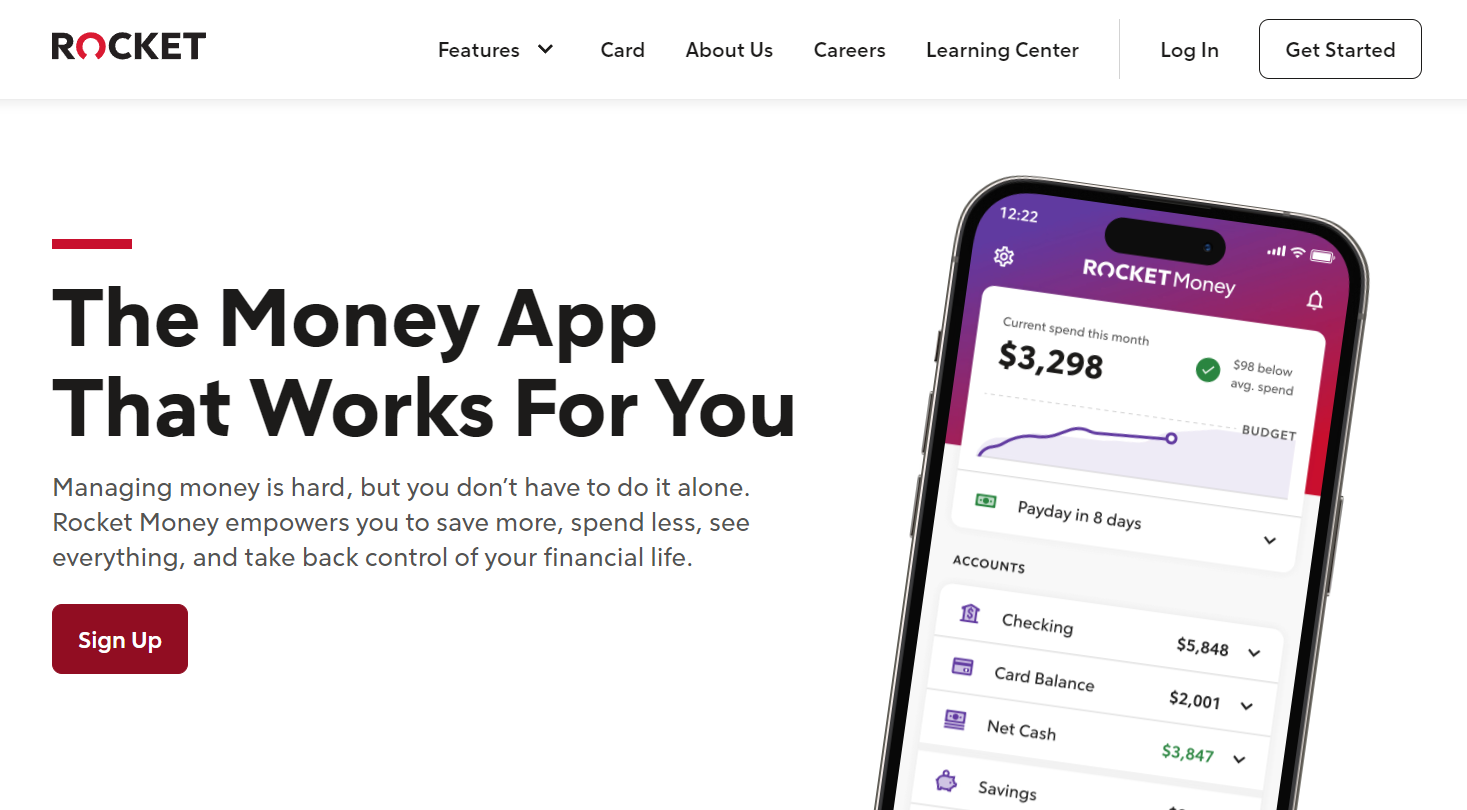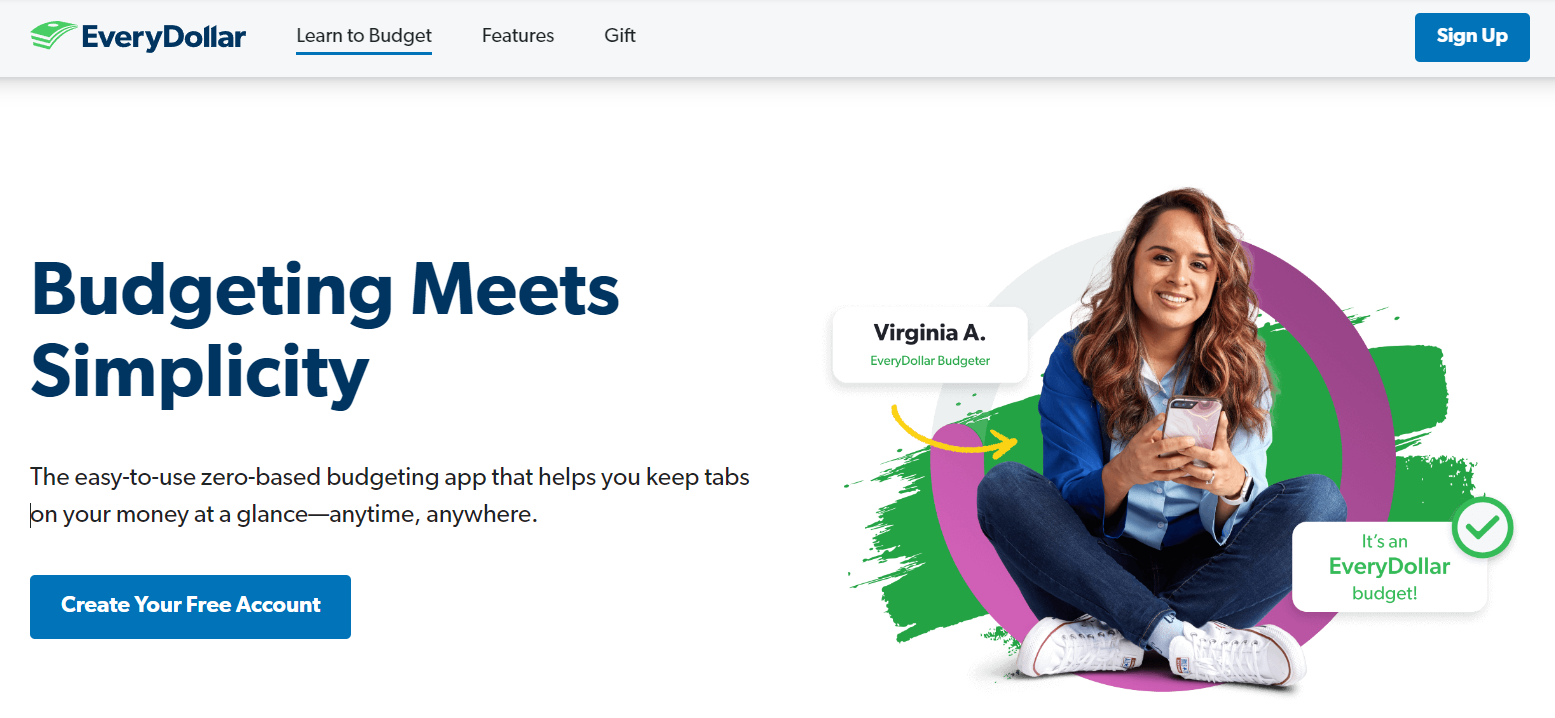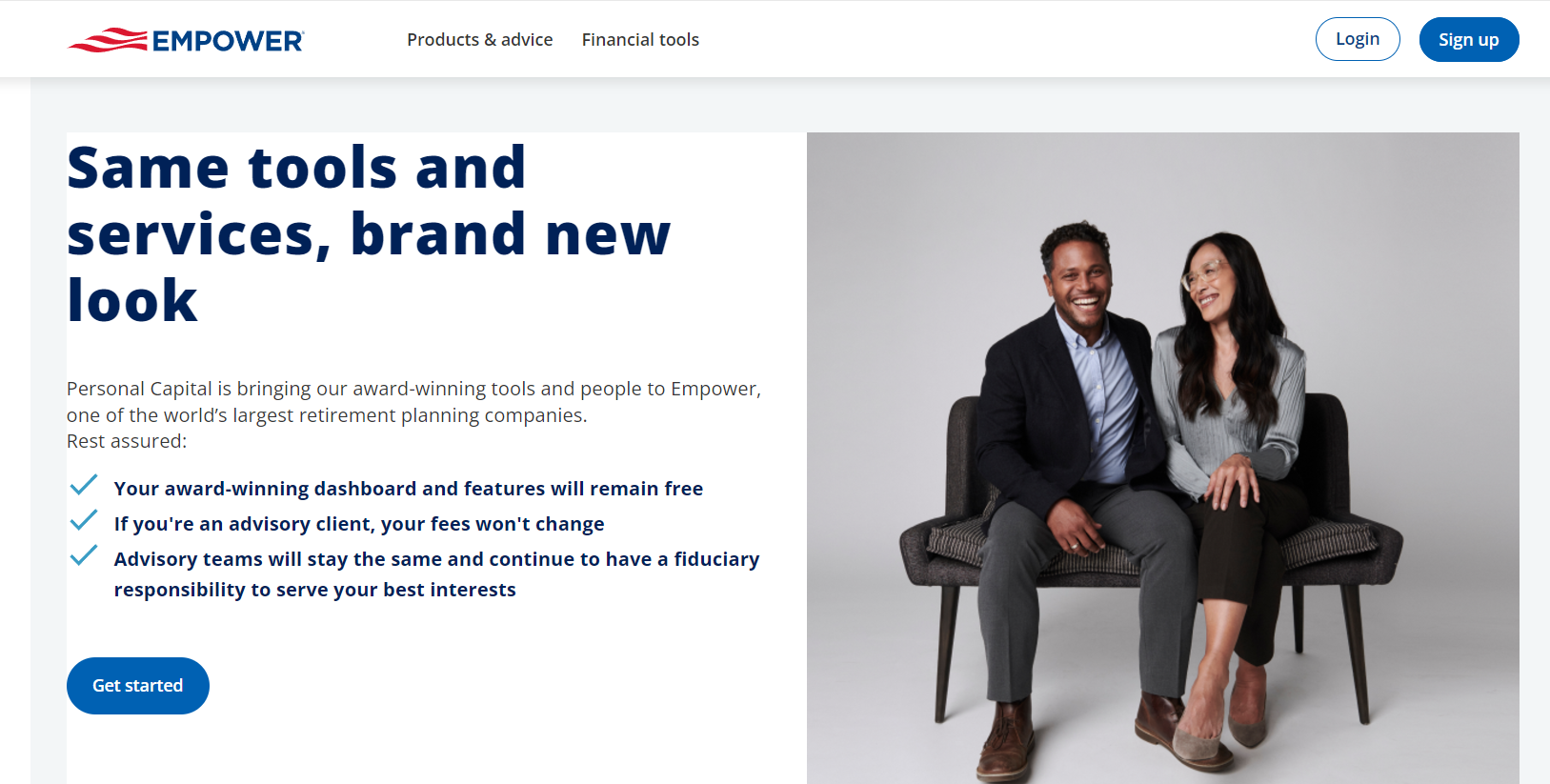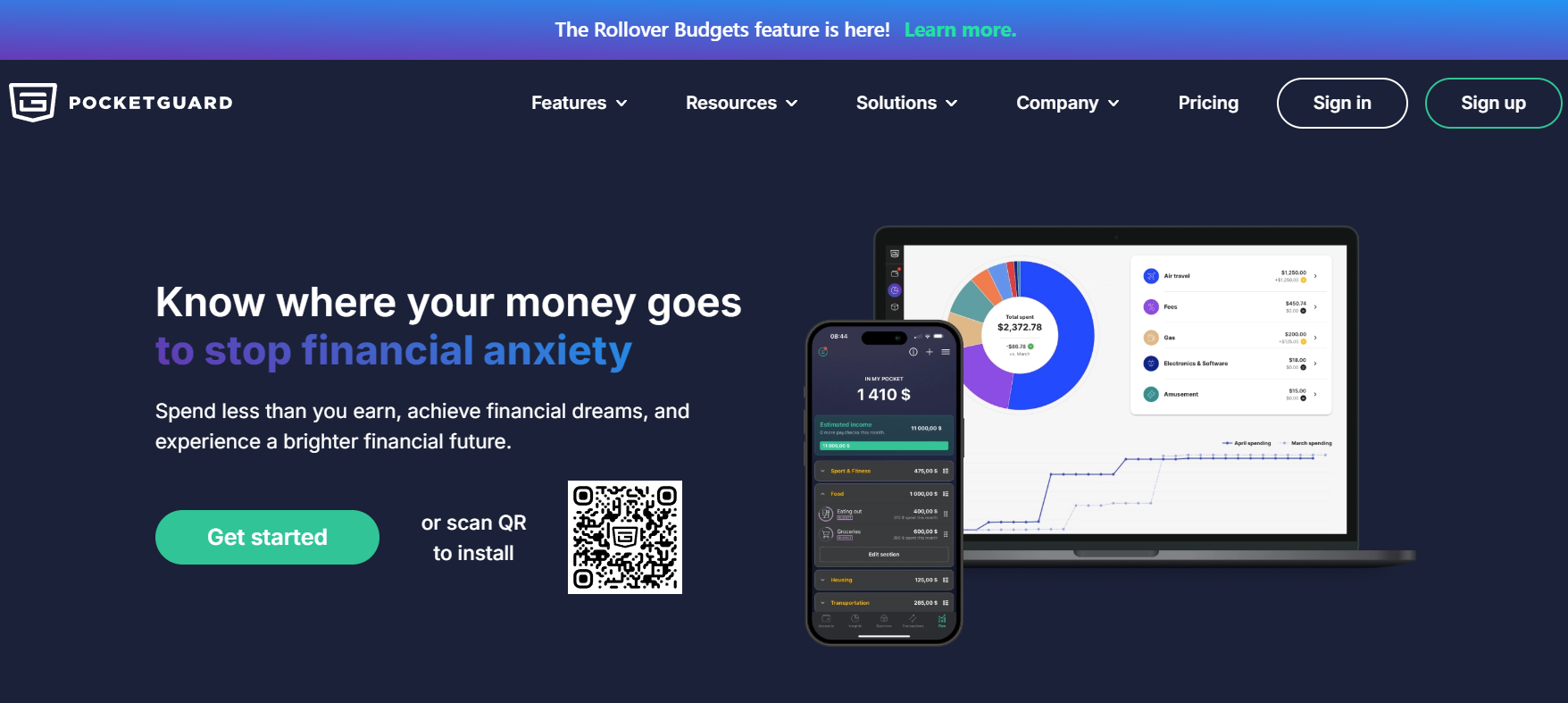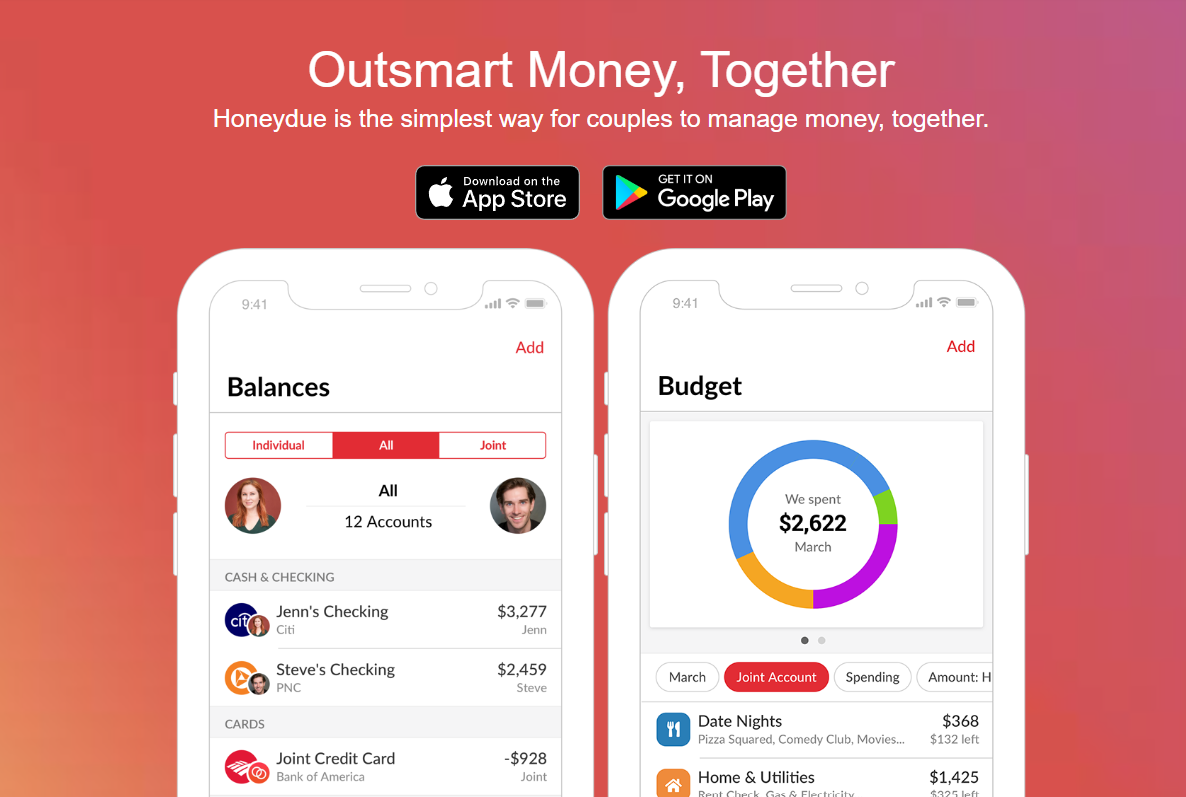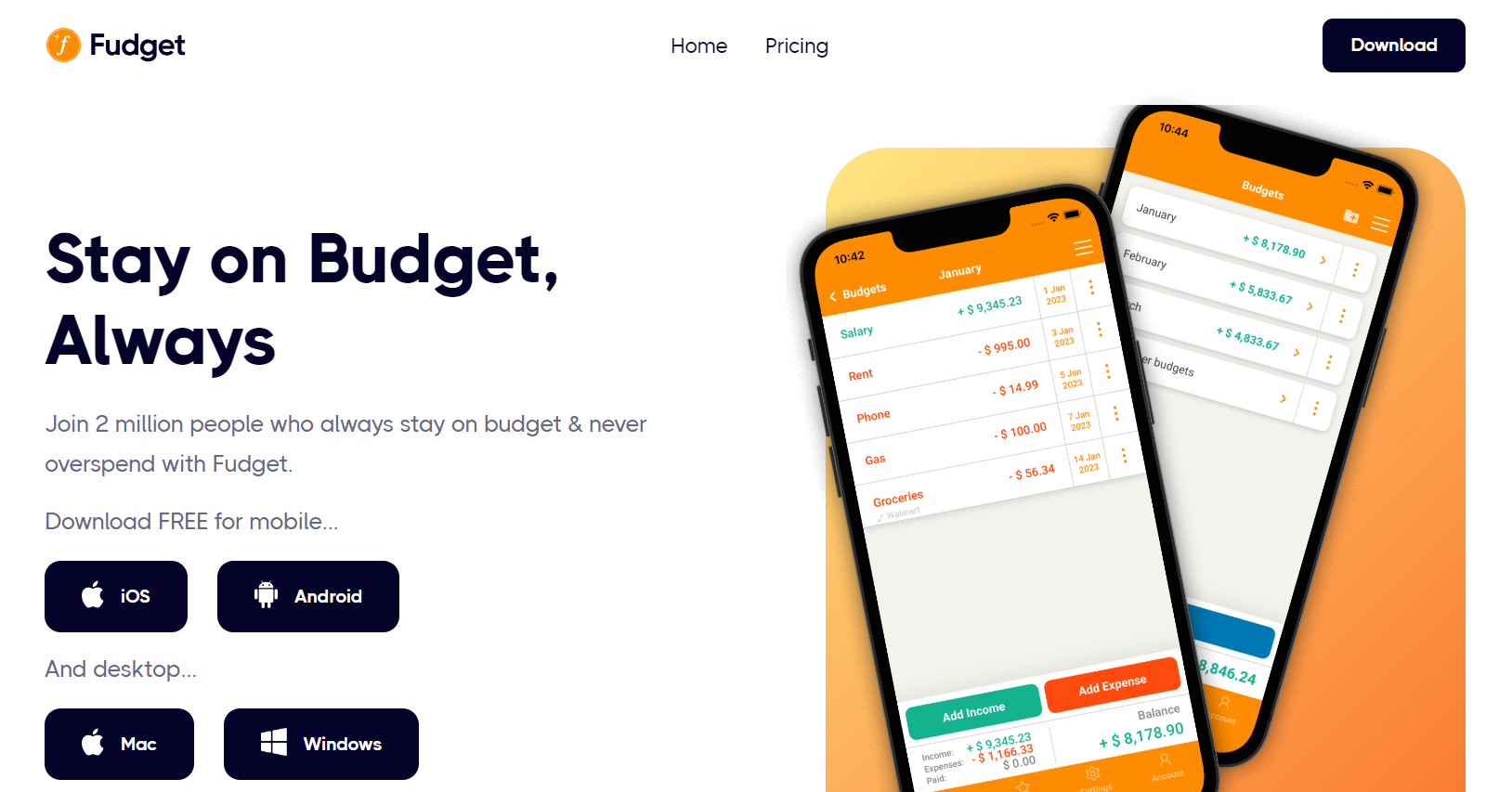What Are the Best Budgeting Apps for Android? Here are the top 17 apps to turbocharge your savings
Mint is one of the most popular budgeting apps. It will be shutting down in 2024. We’ve been budgeting for years and have had trouble finding an affordable, easy-to-use app that tracks your net worth in detail. This article reviews a range of budgeting software to help you choose the right solution for you. This article will help you find a budgeting app that works for you, whether you’re a flexible budgeter or envelope method enthusiast.
1. Lunch Money
Lunch money is one of the most innovative and interesting budgeting apps on the market. Jen Yip is an experienced Silicon Valley programmer who created the app. Its unique feature is its crypto integration. This allows you to keep track of your digital currency investments alongside other investments. Multi-currency is also available for users who save and spend in more than one currency. The platform is designed with a simple, intuitive interface and lets you create an unlimited number of budgets, each with its own categories. Lunch Money will suggest budget amounts based on your past budgets and spending. Even un-spent funds can be automatically rolled over and added to spending targets. This software excels in tracking expenses automatically, thanks to its accuracy. You can fine-tune rules to categorize purchases, and you can add tags for bulk transactions. For example, travel costs to an upcoming holiday. It’s almost automatic. For easy viewing of your transactions, you can use criteria such as category, account name or payee, tags and date ranges. Lunch Money compiles detailed reports about patterns in your spending. Your monthly email will summarize your transactions and highlight your most expensive purchases. You can also use the analytics tool in order to identify trends, such as which categories you spend most money on.
Getting started
Lunch Money’s web-based platform is the only one available. There is no official app for smartphones. Lunch Money’s developer community has developed unofficial add-ons including a smartphone application and Zillow integration for tracking real estate values. Lunch Money offers a risk-free 30-day trial as well as a pay-what you-can pricing plan that costs between $50 to $150 per year. You can also pay $10 per month if you do not want to pay annually. After you sign up, you can use Plaid to securely sync the information from your bank accounts. You can sign up here for Lunch Money
2. Windfalls AI
While not technically a budgeting app, Windfalls AI (also known as Windfalls) is the latest company that offers to negotiate your bills in exchange for a share of the savings. Billtrim and other established players are available. The model is tried and tested. This is interesting because the AI basically handles all of the calling and negotiating. This is interesting because the AI basically deals with doing all the calling and negotiating.
The reality is big service providers like Comcast or your credit cards are constantly looking for ways to raise prices on you, so you might as well have technology on your site that lets you reduce your costs automatically and passively.Getting Started
Windfalls is web only. Windfalls is web-only, which means you will need to use your computer to sign up. There is no smartphone app. It’s pretty simple to sign up. You need to navigate to the site and create an account. Upload all bills that you wish to save money. The website takes care of everything else. The software will notify you when it’s done and you’ll receive a bill. You can sign up for the software here.
. You Need a budget is the best app for those who like zero-based budgeting. This involves assigning every dollar earned to a specific task. YNAB lets you create different line items for recurring expenses, variable costs, debt repayments, and savings goals. You’ll allocate money to these line items throughout the month to make sure they are all funded before the due date. YNAB syncs automatically with your credit card and bank account to keep track and tag all transactions. You’ll receive a prompt to transfer funds to other categories if you spend too much in one area. Some users complain that the software has a steep learning curve and is complicated. To use YNAB, new users will need to do some research to learn the underlying methodology. The app uses jargon, like age of money and wish farm. YNAB offers tutorial articles that will help you get going, and a Reddit community is available to answer any questions.
Getting started
YNAB offers a web-based version as well as apps for smartphones, tablets, and smartwatches. Sign up for a YNAB free trial at the website. You will be asked a few questions regarding your debts, savings goals, and expenses by the app to create a customized account. You can then further customize your budget. After the trial, YNAB will cost $14.99 per monthly or $109 annually if you choose to pay annually. It is therefore on the more expensive side when compared to other budgeting apps. You can download YNAB by clicking here.
4. Quicken – Simplifi
Another notable mention in this list of best budgeting apps is Quicken Simplifi.
Quicken simplifies automatically creates your budget based on income, recurring expenses, savings goals and planned expenditure. The app categorizes and reconciles your transactions to adjust your spending plan throughout the month. You can see at a glance how much you have left to spend based on the purchases you made and the savings you set. The app has detailed financial reporting. You can filter transactions by payee, tags or date to track your spending over time. You can also view your investment portfolio, which shows your current holdings and investment gains and loss over time. It also provides news updates about your assets. The tax planner allows users to track their refunds and see projected tax liabilities. The app is available on both the web and mobile, but there is no free version. The subscription is $5.99 per monthly bill if billed annually. Quicken is known to run frequent sales so you might be able get a discount. Quicken Simplifi is not always easy to install. Reviewers have complained about problems linking bank accounts with credit cards. Quicken provides a 30-day risk-free money-back promise so that you can test it out. Here is the link to Quicken Simplifi. Rocketmoney
Rocket Money analyzes your spending history and automatically creates a budget for you. The app categorizes your transactions and will alert you if any of the budget categories are about to be exceeded. You will also be notified about upcoming charges or low balances on your account, helping to prevent overdrafts. Rocket Money will even calculate the best month to save based on cash flow. You can use the automatic saving feature if you have a Rocket Money savings account. This will deposit money on your behalf. Rocket Money, like other budgeting apps that are popular today, provides insights and reports on your spending to help you manage your finances. The app allows you to view your credit rating and connect investment accounts in order to track your networth. You can even save money on cable, subscriptions and car insurance with a bill-negotiation service. You will be charged a fee based on a percentage of your first-year savings, which decreases the financial benefits of the program. Rocket Money’s free version does not allow access to certain features such as tracking your net worth and creating custom budget categories. You may have to upgrade to a premium subscription with a pay-what you can pricing model. Subscribers have the option to pay anywhere between $6 and $12 per month, depending on their financial situation. You can also try it out for 7 days. Rocket Money’s official website can be found here.
. EveryDollar
EveryDollar was created by financial guru Dave Ramsey and utilizes the zero-based budgeting method, making it similar to YNAB. The budget tab allows you to forecast your income, spending, and saving goals. EveryDollar keeps a running total of your spending and remaining funds throughout the month. Users with the free plan will have to manually enter their transactions. Premium subscribers, however, can link their bank account and sync automatically. EveryDollar has a section of insights with graphs, charts and tables that show your spending patterns over time and the fluctuations in income. This feature allows you to see your progress in sticking to your budget, and where you can improve. Subscribers to the Premium plan can set financial goals and track their progress, while also tracking the net worth. They also have access to a feature that helps them plan their paychecks throughout the month, as bills are due. EveryDollar offers a web-based version as well as a mobile application if you prefer to budget using your phone. Create an account, and answer some questions about your financial situation and goals. You will also be asked whether you would like a premium subscription that costs $79.99 a year or $17.99 / month. EveryDollar allows you to try out premium features for free before you commit. You can contact the support team if you have any questions about the setup.
7. Empower Personal Dashboard (Personal Capital)
Empower Personal Dashboard is the best budgeting app for retirement planning. You can track your investments and net worth, as well as alternative assets such artwork and gold. Empower analyzes and displays the performance of your portfolio over time, as well as your asset allocation. This helps you to diversify your investments. The app also estimates whether you are on track to reach your retirement goals. The app takes into account factors such as the value of your investment, your household composition and location, projected Social Security Income, etc. You can test out different savings rates and see what effect they have on your progress. Empower offers a savings plan to help you create a fund for emergencies and set goals. The budgeting tool also tracks all your transactions, and it breaks them down into categories so you can identify any money leaks. Empower is free, easy to use, and available on mobile and desktop. Some features, like the investment performance tracking tool, are not available in the mobile app. Empower is accessible here.
. Pocketguard
PocketGuard is easy to use and customizable, allowing you to create 70 or more budget categories if needed. You’ll be alerted when you spend more than 50% of your budget on a particular category. PocketGuard helps you to plan your annual expenses by scheduling them on an annual basis. You can set SMART goals for saving money and be notified if you don’t have enough to meet them. You can create a plan to pay off your debt using the avalanche or snowball method if you are in debt. PocketGuard creates a schedule for paying off your debts based on the amount of money you have left after living expenses. You can adjust the plan to your liking and experiment with different scenarios in order to determine how your choices will affect your date of debt freedom. PocketGuard also offers personal finance courses, subscription cancellation, bill negotiation, and analytics tools that can help you manage cash flow.
Getting started
PocketGuard offers both a mobile and web version, and a seven-day trial to test it. You will be charged $12.99 per monthly or $74.99 annually if you choose to pay for the service. Click here to navigate to PocketGuard. HoneydueHoneydue is a great solution for couples who split expenses and have multiple accounts to manage. Link your bank accounts, credit card, and investment platforms in order to see your complete financial picture. Couples that haven’t combined their finances completely can choose which information to share. You can choose to hide certain accounts or transactions if you want your privacy. Honeydue simplifies household budgeting by allowing users to set spending limitations for each category. Both you and your partner receive alerts if your budget is about to be exceeded. The app tracks your spending and categorizes it, even showing which partner made the purchase. You can pay your partner back for everyday expenses like takeout and other daily expenses. The lack of technical assistance is the main drawback. Some reviewers complained that the app had bugs and that no one was there to assist with troubleshooting.
Getting Started
Honeydue is completely free to use. Download the app on your mobile device, customize your profile and invite your partner. There is no web interface so both you and your partner will need to have a mobile device. Honeydue is available in the Apple App Store.
10. Greenlight
Greenlight is one of the best budgeting apps for children and parents. Greenlight, when paired with the debit card that comes along with it, teaches children how to spend and save responsibly. Guardians can establish boundaries by setting spending limits, blocking unsafe transactions and limiting their use. Greenlight allows children to receive and request funds from parents whenever they need it. Parents can also assign chores to their children and send payment automatically to the debit card. The app allows kids to save money and earn interest. The app also allows kids to play financial games that teach them more about money. The Premium Greenlight plan includes additional safety features such as SOS alerts and driving reports. You can also use the investing feature to teach your child about compound interest. They can start building wealth with your guidance and permission.
Getting started 
Greenlight offers a $4.99 monthly plan that includes debit cards up to five children. If you want to give your children the ability to earn cashback on their purchases, and start investing, then you will need to upgrade to Max Plan, which costs $9.98 per monthly. You must pay $14.98 per monthly to access the safety features and teen driving reports. The company’s website has the
Greenlight.
11. WallyGPT
WallyGPT is one of the best personal finance apps powered by AI, allowing you to manage your finances with ease. Wally will automatically track your spending, income and bills. It can even remind you about due dates so you don’t incur late fees. It can calculate your networth to keep you informed about your financial progress. Wally can answer your questions regarding finances in a detailed and accurate manner. Wally, for example, can help you develop a customized savings plan to prepare for an upcoming big purchase such as buying a car or home. You can ask Wally about trends and changes to your spending in order to better understand your financial behavior and make necessary modifications. It can even break down complex financial concepts like sequence of return risk in simple terms that anyone can understand. Wally has some impressive features but it is not rated highly. Wally was rated 1.7 stars in the Google App Store, and 1 star on the Apple Store. Some users complained about technical issues or bugs that prevented the app’s correct operation.
Getting Started
WallyGPT has both a desktop version and a mobile app. It is compatible with more than 15,000 accounts from 70 different countries. The free version allows you to improve your finances without needing to add another subscription to your budget. You’ll only be able to ask about 50 questions a day. If you think that you will need more help than this, then consider upgrading to Wally’s paid plans. 
12. Fudget
Fudget, a simple app for budgeting that does not sync your bank account or track your transactions automatically. You will have to enter each purchase individually, as you would in Excel or on paper. You can be more aware of your purchases, and your spending. Fudget lets you carry over recurring expenses and income from month-to-month, saving you time by not having to reenter your fixed bills every month. The app allows you to search, filter, and add notes to transactions. You can also visualize your spending with charts. You can even keep track of your spending with a running total and a calculator. Fudget was rated 4.7 stars by over 600 users for its user-friendly interface. Fudget’s lack of automatic expense tracking can cause financial problems if you are not diligent in entering your purchases, or if you “fudge” the numbers.
Getting Started
Fudget works on IOS, Android, Windows, and Mac. You can use the basic version for free to create 5 budgets with 250 entries. Upgrade to the premium version if you need more entries. It costs $19.99 per year. You’re not ready to commit for a year? The 7-day trial is free. You can also opt for a six-month subscription for $14.99.
13. CountAbout
CountAbout is one of the best budgeting apps for solopreneurs, allowing you to manage your company’s finances and your own in one place. You can upload receipts and send invoices for an additional fee. You can create a schedule for paying bills to manage your cash flow. The premium version of this app downloads your data automatically from your bank account, credit card, and investment accounts. It does not categorize your transactions, so you will have to reconcile manually. Users can create however many budget categories they wish and can split transactions as necessary. A useful tool shows how small reductions in spending can accelerate your financial progress.
Getting started
CountAbout is available in both a mobile and web app. The software can be tested for 45 days without risk to ensure it is right for you. Basic plan is $9.99 annually, payable annually. Upgrade to the Premium plan at $39.99 annually if you want automatic bank sync. The ability to upload receipts with transactions is $10 per year and costs $60 extra per year.
CountAbout is available on the apps page.
14. Qube Money
Qube Money is a budgeting app that comes with a bank account and debit card. This app uses the envelope budgeting technique to help you plan ahead. Create envelopes, or “qubes”, for your bills, categories of discretionary spending, and savings goals. You’ll then fund these envelopes with the cash from your Qube account. You can transfer money at any time between Qubes if needed. Qube’s proactive feature ensures you stay on track with your plan. The linked debit card will maintain a balance of $0 until you choose which envelope to use. The premium plan of Qube allows you to also add a companion. Your companion can use the shared bank account to make purchases. You can also create unlimited qubes with the premium subscription, set up recurring transfers and fund your qubes every month automatically. You can add up to five people to your account by signing up for the Qube family plan. You can give up to five debit cards in your household. After creating your account you can select the features that you want. There is a free version, but you can unlock premium features like subscription management or the ability to add an additional companion for $12 per month. Consider upgrading to the $19 monthly family plan if you have more than one household. Each cardholder must have a smartphone that has the Qube app installed to choose the correct envelope and load the debit card. The Qube app works with Apple and Android.
QubeMoney can be found here.
15. Buckets
Billed “Private family budgeting app”,
Buckets, is one of best budgeting apps that use the envelope method. You can set money aside in different “buckets”, for bills that are recurring, discretionary expenses, saving goals and debt repayment. You can manually enter transactions throughout the month or upload bank statements. You’ll then reconcile every transaction by indicating the “buckets” that each purchase belongs to. Buckets does not automatically sync your bank account unless you pay for SimpleFIN Bridge. Buckets offers a flexible, no-time limit free trial. You’ll pay only $64 for the software when you are ready to purchase it. This software is intended for use on local computers to increase data privacy. The software is compatible with Macs and PCs. You can also use a mobile application to enter your purchases while on the move. This information is synced up with your computer software in real time.
Buckets can be found at budgetwithbuckets.com.
16. Tiller
One the best budgeting applications for Excel users is Tiller. It connects your spreadsheets to your bank account. Tiller transfers all your financial data into Google Sheets or Excel, so you can easily track transactions, debts, and savings. Tiller automatically categorizes purchases based on the rules you specify and includes custom templates that help you customize your spreadsheet. You will also receive an email each day that summarises your recent transactions, allowing you to see your financial situation in real-time.
Tiller has no ads and a collaboration function that lets you share your budget in real time with a partner. You can get support from a team of customer service representatives, a library with help guides and peer communities.
Getting Started
Tiller can be integrated with Google Sheets or Microsoft Excel depending on your preference. You can access the budget spreadsheet on your desktop, or via Google Sheets or Excel mobile apps. Tiller has a 30-day free trial and charges $79 per year thereafter.
Tiller can be found here.
17. Goodbudget
Last in the list of the best budgeting apps, Goodbudget is home budgeting software based on the envelope budget system. You can use the software to create digital “envelopes”, which are then used for each of your budget categories, such as housing, food and insurance. You then use the app and allocate a certain amount upfront for each envelope. You can plan your spending and not just track it. It is a good idea to plan your spending, especially if you have large savings goals or want to reduce debt.
Goodbudget has a good rating (4.6 out of 5 stars in the App Store), but it requires a lot of maintenance. It does not automatically update your account or handle transactions. Data categorization is semi-automated, as are some other features. It has features that let two people sync budgets. This makes it a good app for couples. It is available on the web, or on Android or iPhones.
Getting Started
Getting Goodbudget is pretty easy. It is easy to get started with Goodbudget. You only need money, an account at a bank and a working email. There is a free version and a Plus plan that costs $10 per month, or $120 annually. You can find them on this page.
Frequently asked questions
Are apps for budgeting worth it?
You want to set up and adhere to a budget in order to save money. It may seem counter-intuitive to add an additional subscription to your monthly costs by paying for budgeting software. Many people save more than they pay for the app. For example, You Need a Budget says that new users save
an average of $600
in their first two months, which more than covers the $109 annual fee.
According to an Intuit survey,
more than 60% of respondents
didn’t know how much they spent in the previous month. Budgeting apps that sync up with your credit card and bank account automatically categorize and track your transactions. The best budgeting apps also include charts and graphs to help you keep track of your spending. What is the best Mint alternative?
Are you still mourning the loss? The app was popular for its streamlined interface that showed users their entire financial picture, including investments and average monthly expenditures. Lunch Money has been rated as one of the top budget apps by former Mint users because of its easy-to-use interface, pleasing design and comprehensive financial tracking. Lunch Money syncs automatically with your financial accounts to allow you to track your spending, bank balances, and investments. You can even monitor your crypto holdings and outstanding debt all from the same app, giving you a bird’s eye view of your finances.
What’s the best budgeting app to help with finances?
The best budgeting app for you depends on your financial needs and money management style. Honeydue or Monarch Money are apps that can help you and your partner get on the same financial page. Apps that allow you to set a budget based on zero dollars, such as YNAB or EveryDollar, are ideal for individuals who wish to control their spending. Our top pick, Lunch Money, is for people who prefer a flexible app that works with any budgeting style. What is the best method of budgeting?
The 50/30/20 rule is one of the most effective budgeting tools to control your spending. The 50/30/20 rule involves setting aside half of your income to cover basic needs such as housing, food and utilities. You can allocate roughly 30% of your income to wants, such as vacations and hobbies. Rest 20% should go to savings and investment. You can adjust the percentages as needed to fit your financial situation. You may want to reduce your entertainment expenditure if you still have student loans outstanding. This will help you pay off your debts faster. Most budgeting apps track and categorize transactions automatically to help you manage your money. If you decide to use a budgeting program that is paid-for, you will save more money than you spend by having better financial control and clarity.
Author’s Contact Information:
Vicki Munroe
Email: vamonroe98@gmail.com
James Hendrickson
Email: james@districtmediafinance.com
Phone: (202) 468-6043
Material Connection Disclosure: Some of the links in this article are “affiliate links.” If you click on the link and make a purchase or sign-up, Saving Advice will receive an affiliate commission – which will help keep the site going. We only recommend products that we believe will be of value to readers at savingadvice.com. We are disclosing this in compliance with Federal Trade Commission’s 16 CFR, Part 255: “Guides Concerning the Use of Endorsements and Testimonials in Advertising.”


